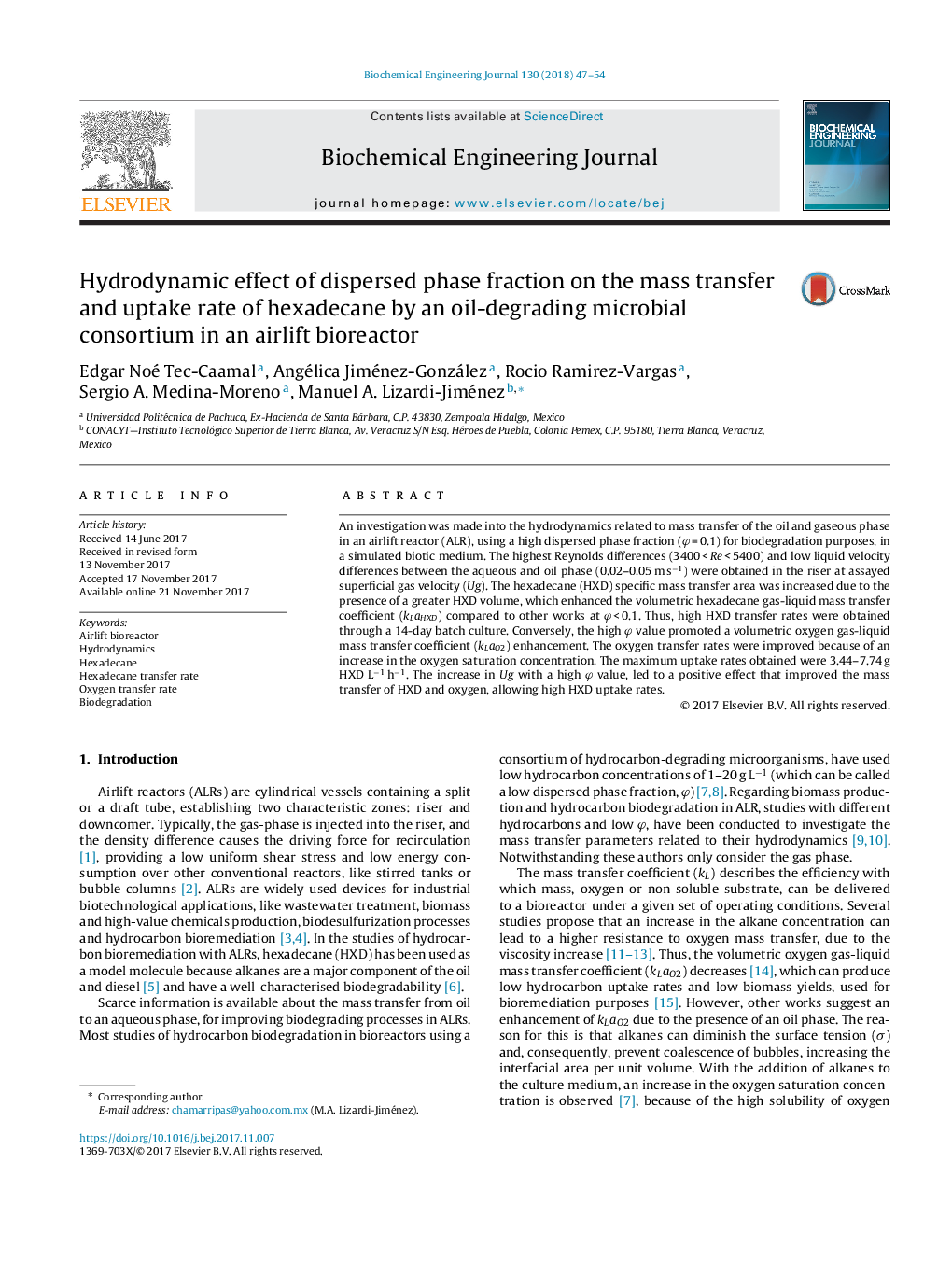| Article ID | Journal | Published Year | Pages | File Type |
|---|---|---|---|---|
| 6482293 | Biochemical Engineering Journal | 2018 | 8 Pages |
Abstract
An investigation was made into the hydrodynamics related to mass transfer of the oil and gaseous phase in an airlift reactor (ALR), using a high dispersed phase fraction (Ï = 0.1) for biodegradation purposes, in a simulated biotic medium. The highest Reynolds differences (3400 < Re < 5400) and low liquid velocity differences between the aqueous and oil phase (0.02-0.05 m sâ1) were obtained in the riser at assayed superficial gas velocity (Ug). The hexadecane (HXD) specific mass transfer area was increased due to the presence of a greater HXD volume, which enhanced the volumetric hexadecane gas-liquid mass transfer coefficient (kLaHXD) compared to other works at Ï < 0.1. Thus, high HXD transfer rates were obtained through a 14-day batch culture. Conversely, the high Ï value promoted a volumetric oxygen gas-liquid mass transfer coefficient (kLaO2) enhancement. The oxygen transfer rates were improved because of an increase in the oxygen saturation concentration. The maximum uptake rates obtained were 3.44-7.74 g HXD Lâ1 hâ1. The increase in Ug with a high Ï value, led to a positive effect that improved the mass transfer of HXD and oxygen, allowing high HXD uptake rates.
Related Topics
Physical Sciences and Engineering
Chemical Engineering
Bioengineering
Authors
Edgar Noé Tec-Caamal, Angélica Jiménez-González, Rocio Ramirez-Vargas, Sergio A. Medina-Moreno, Manuel A. Lizardi-Jiménez,
